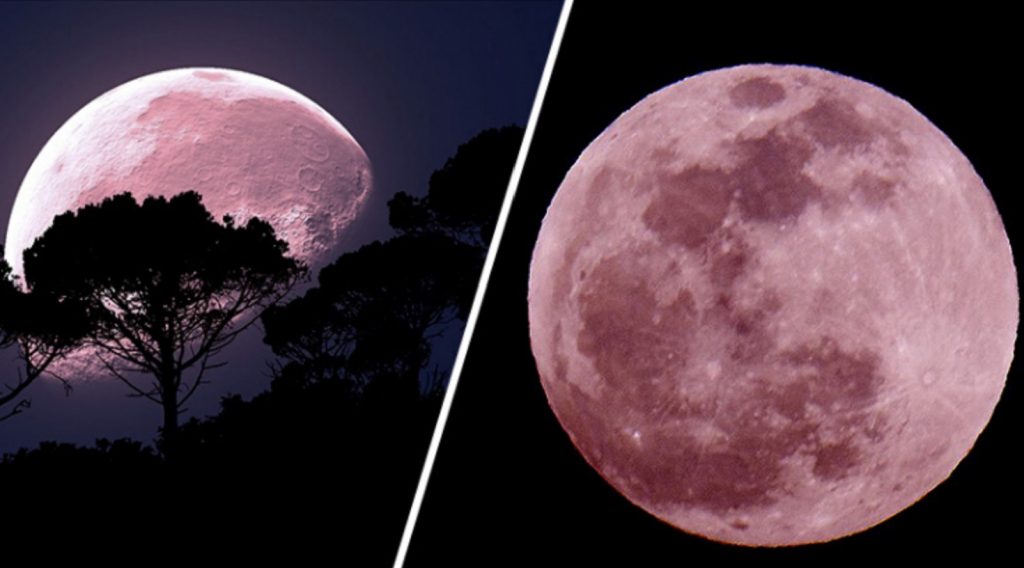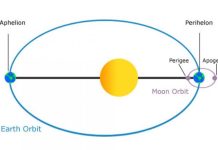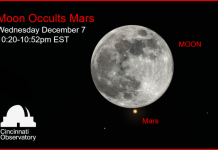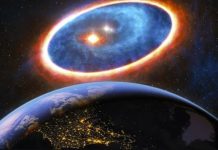
While half of humanity is on lockdown, you can still experience some amazing space events in the night sky in April 2020.
The full pink supermoon will peak on April 7 and 8, depending on where in the world you find yourself.
Meanwhile, more than 9 meteor showers will occur in April 2020, with the major Lyrids with its 20-700 meteors / hour peaking on April 22.
Pink Supermoon on April 7-8
Expected to be the brightest supermoon of 2020, this special moon comes at a time when millions across the globe won’t have the freedom to travel to find the perfect viewing spot away from city lights.
We hope city dwellers are able to enjoy the light of this moon from the safety of their homes and take comfort in the fact that many cities are enjoying clearer skies as a result of millions of vehicles not being on the roads.
The first full moon of spring, also known as the Paschal Moon in the Christian calendar and used to calculate the date for Easter, will be visible after sunset and reach its peak illumination at 10:35pm, EDT.
But don’t expect the moon to actually be pink. Instead it will be its usual color, just brighter and bigger, especially when it’s close to the horizon at moon rise or moon set.
According to this Full Moon Almanach, full moons are named after the seasons or events usually happening during the season.
As such, the Pink Moon is named for the first spring flowers that cover the ground like a pink carpet, called Wild Ground Phlox or Moss Phlox (Phlox subulata). Native to North America, these flowers often bloom around April’s full moon.
Native American tribes, Anglo Saxons, and Germanic regions named the months after seasonal features often associated with nature in the Northern Hemisphere.
Many of the Native American names were used by the Colonial settlers and are still used today. Other names for the April full moon include the Sprouting Grass Moon, Fish Moon, Hare Moon, and Egg Moon (birds start laying eggs).
A supermoon occurs when the full moon or new moon’s approach is closest to Earth, its “perigee,” often called a supermoon.
At this unprecedented time when the people of the world face a common, unseen enemy, whether you can bask in the light of this supermoon or even just get a brief glance at it, take the opportunity to blow it a kiss of victory and peace to share with the world.
The third supermoon of 2020 is just a month away, on May 7. Perhaps by then we’ll be able to venture outside to find that special spot to moon gaze!
8 meteor showers and the Lyrids
As shown above, 8 meteor showers are peaking in April 2020:
The most interesting and intense sky show is the Lyrid meteor shower and will peak on April 22 and the morning of April 23.
Counts typically range from 5 to 20 meteors per hour, averaging around 10.
Occasionally, the shower intensifies when the planets steer the one-revolution dust trail of the long-period Comet C/1861 G1 Thatcher into Earth’s path, an event that happens about once every 60 years. This results in an April Lyrid meteor outburst.
In 1982, amateur astronomers counted 90 April Lyrids per hour at the peak and similar rates were seen in 1922. A stronger storm of up to 700 per hour occurred in 1803, observed by a journalist in Richmond, Virginia:
“Shooting stars. This electrical [sic] phenomenon was observed on Wednesday morning last at Richmond and its vicinity, in a manner that alarmed many, and astonished every person that beheld it. From one until three in the morning, those starry meteors seemed to fall from every point in the heavens, in such numbers as to resemble a shower of sky rockets …“
Another such outburst, and the oldest known, the shower on March 23.7, 687 BC (proleptic Julian calendar) was recorded in Zuo Zhuan, which describes the shower as:
“On the 4th month in the summer in the year of xīn-mǎo (of year 7 of King Zhuang of Lu), at night, (the sky is so bright that some) fixed stars become invisible (because of the meteor shower); at midnight, stars fell like rain.“
If meteors are linked to apocalyptical End Times, then we should see an Lyrid outburst this year. What do you think?
Take care and keep your eyes into the night sky in April 2020. More End Times news on Strange Sounds and Steve Quayle. [Meteor Shower Tonight, The Mind Unleashed]













If you want to know the real significance of the cycles of the moon during the end times, you have to read this book:
https://read.amazon.ca/kp/embed?asin=B01GYAWBMY&preview=newtab&linkCode=kpe&ref_=cm_sw_r_kb_dp_6rZKEb3QJQMJM
Super Moon and Pinkish will be so much closer other moons in past. This Super Moon is bringing destruction of world and collapse of world with CORNA -19 HAARP IS ACTIVE?
yep maybe! HAARP is surely active